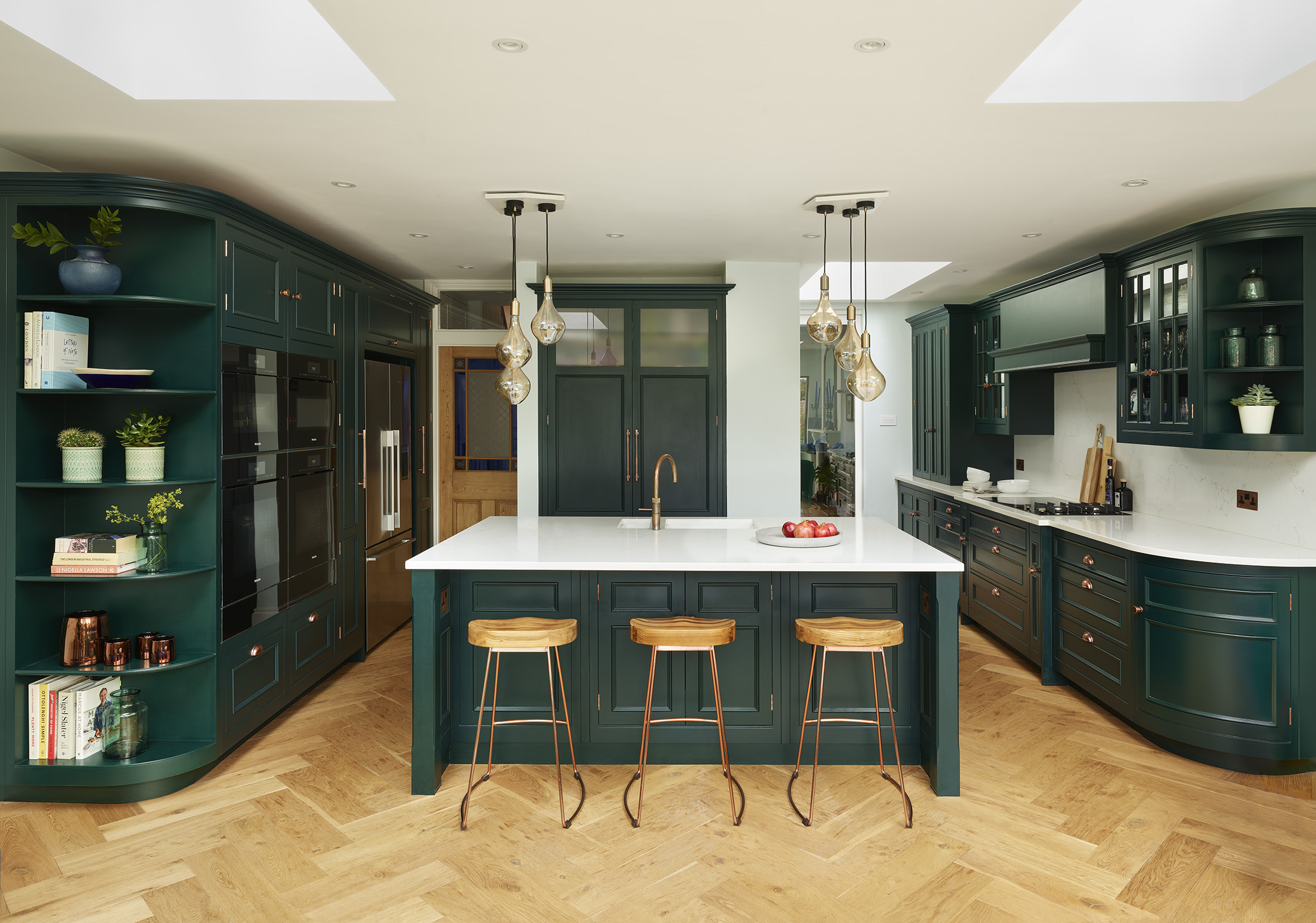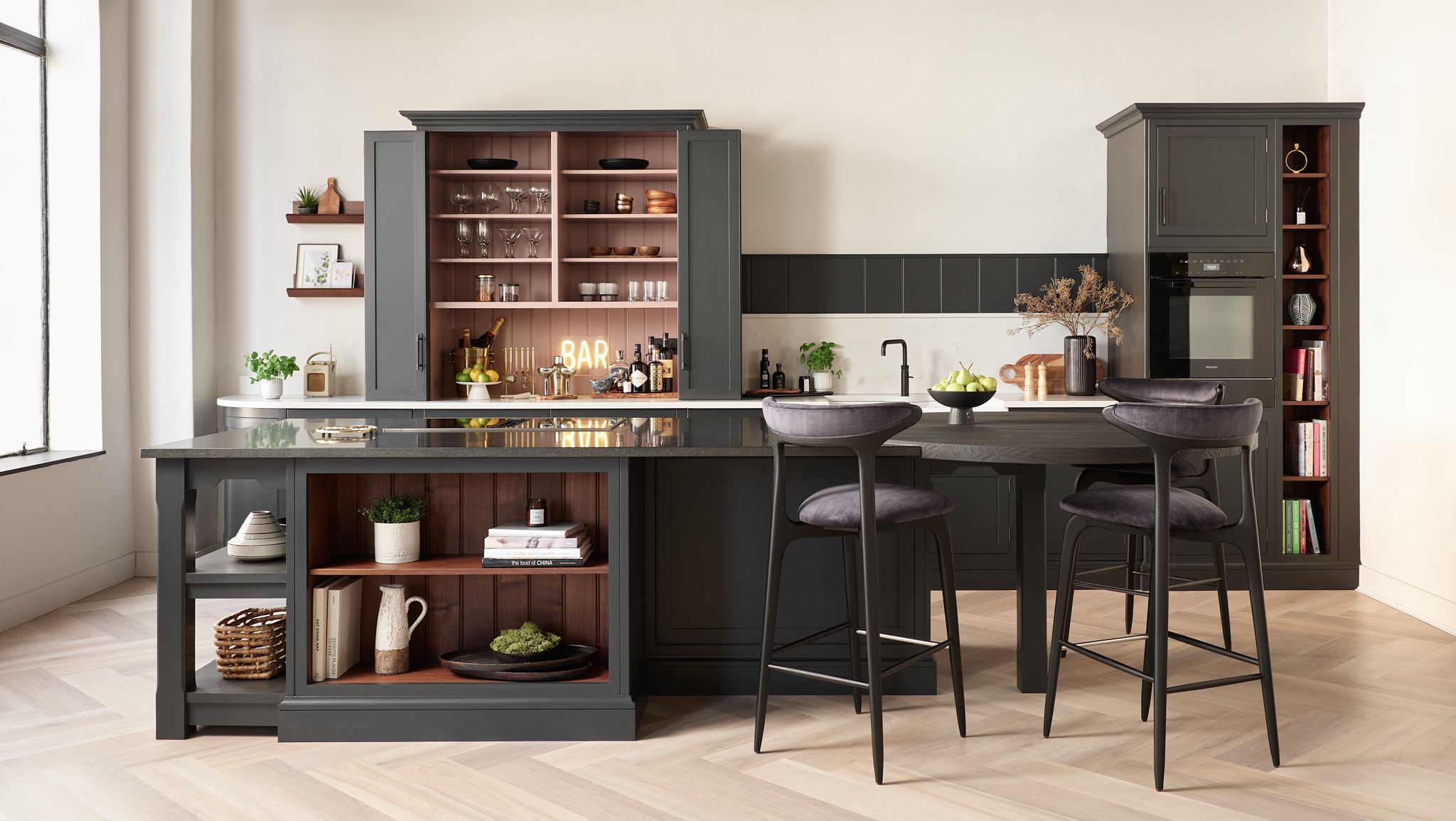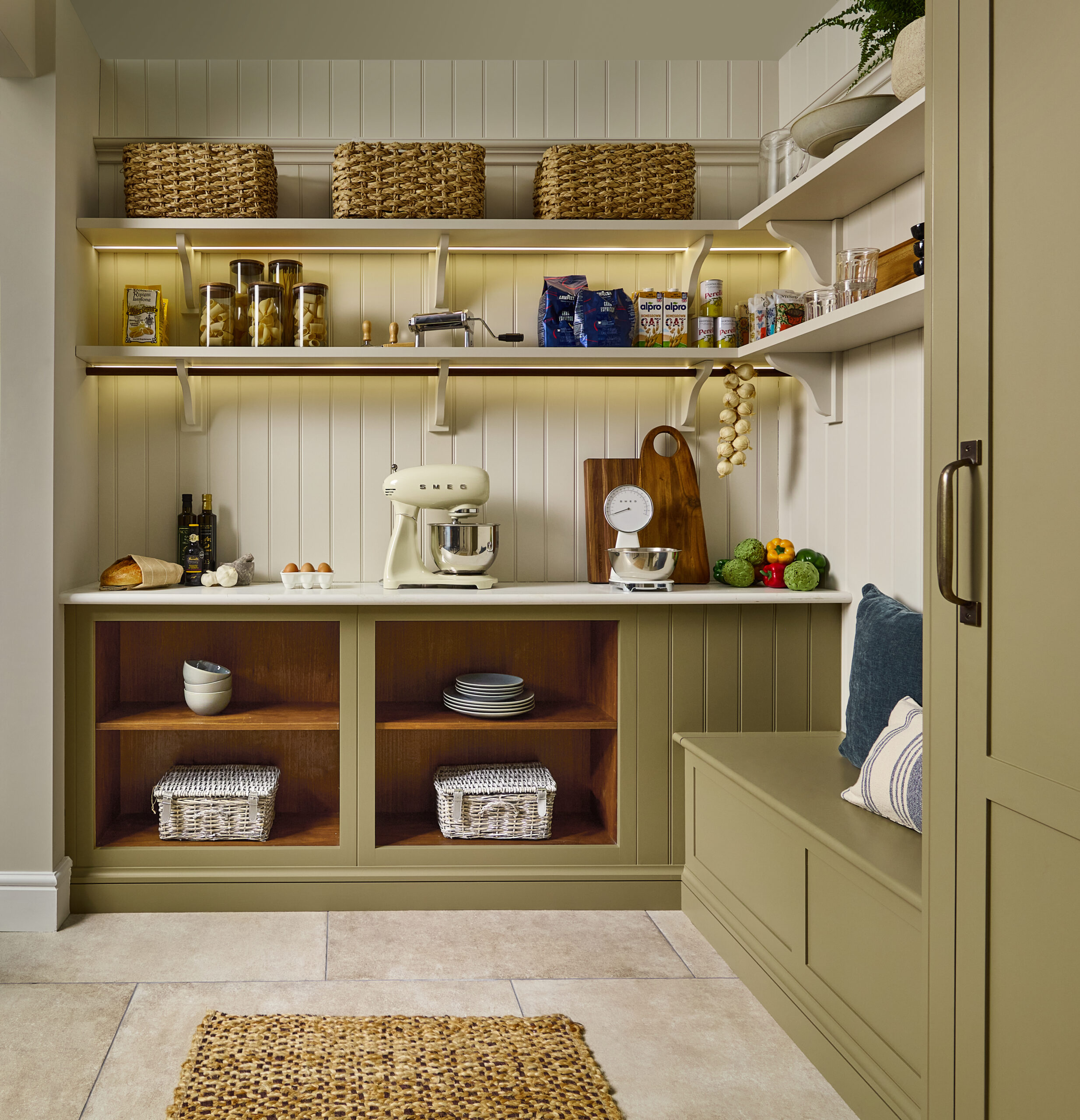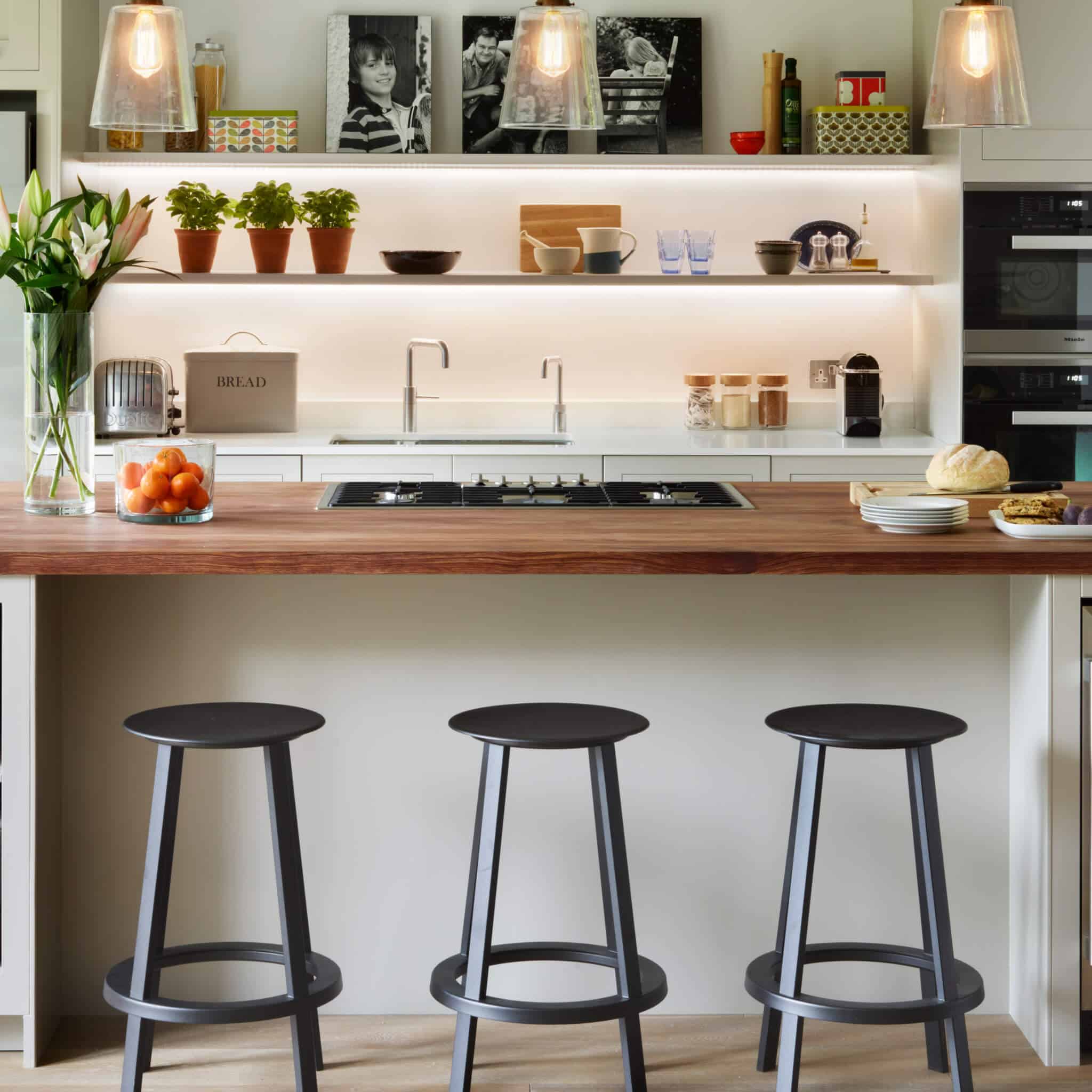
No matter how beautiful your cabinets are, or how incredible your new breakfast bar is, the overall effect of your kitchen could be hugely diminished if the lighting isn’t right. Get it wrong, and the entire room could look dingy, be hard to work in, and contain areas that are too dark for regular use. So, never underestimate the importance of your kitchen lighting.
When we design bespoke kitchens for our clients, they’re usually most excited about things like colour schemes and storage options at first. But once we start to layer different sources of light in line with their unique needs and preferences, they soon see just how important kitchen lighting is to create a bright, welcoming space that’s safe, comfortable and atmospheric.
To ensure you can take advantage of all possibilities, try to finalise and install your lighting scheme as early as possible when planning a new kitchen. You’ll face more restrictions if you wait until the work has already started, so seek advice from your kitchen designer as early as possible so they can offer any useful tips and guidance that you may not have considered. Their experience means they’ll know what fixtures will be most appropriate for your space. This guide will outline everything you need to know so you can go to your designer with your own kitchen lighting ideas.
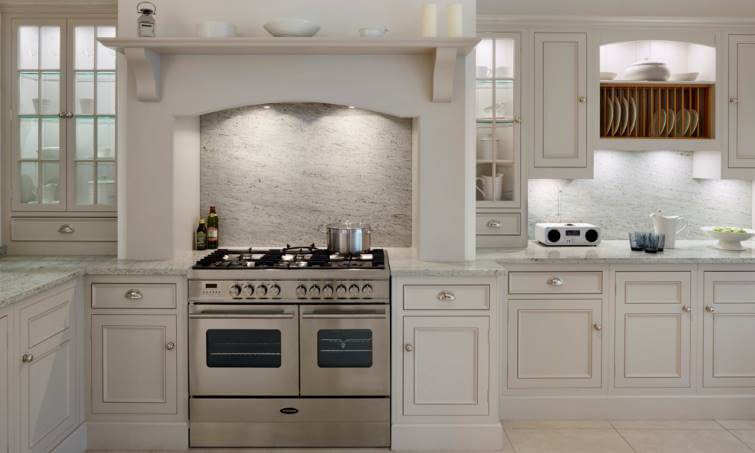
Generally speaking, one lighting fixture per square metre is enough to brighten up a kitchen, but this is certainly not a fixed rule. For example, light bounces off pale tones and reflective surfaces, but dark kitchens absorb light, meaning they will require extra luminosity. Your needs will also depend on the size of your kitchen and the activities that take place. Is there a dining area that requires an ambient glow, or an island where your children do their homework that will need to be well lit?
Follow these steps to start narrowing down your kitchen lighting preferences:
1. CATEGORISE YOUR KITCHEN LIGHTING
Your kitchen lighting can be separated into two categories:
Task lighting
Task lighting is associated with kitchen areas like sinks, cookers, cupboards and worktops where more visibility is needed. It offers bright, no-shadow illumination to help you prepare and cook food safely.
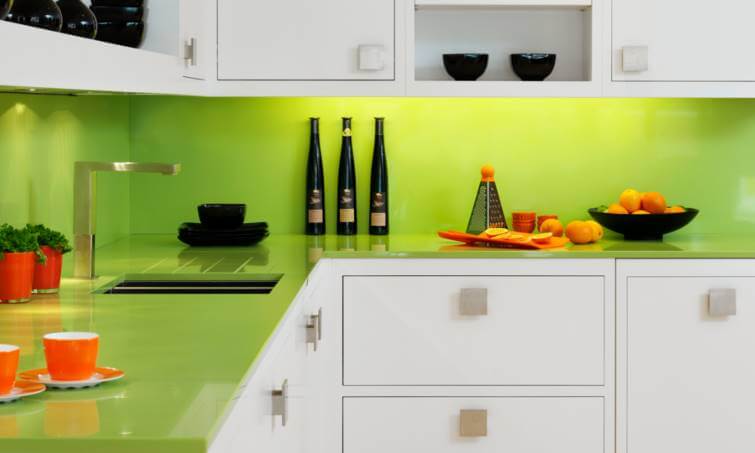
Mood lighting
Softer lighting to create atmosphere and make the kitchen seem less sterile, which is especially important for dining and social zones. Mood lighting can also draw attention to points of interest like art or architectural features.
You’ll need both types of lighting to create a kitchen that’s beautiful and relaxing but still highly efficient.
Now you know that every bulb in your kitchen will serve as either task or mood lighting, you can explore the different fixtures for these purposes:
Recessed Downlights
Recessed downlights lie flush against your kitchen ceiling to provide all-over light coverage with no ugly hanging wires. These are ideal for sleek, minimalistic kitchens like Shaker and Linear designs because they blend seamlessly into the space. Recessed downlights can either be fixed or adjustable, allowing you to tilt them as needed.
Pendants
Pendants work brilliantly above kitchen islands and dining tables, as they offer softer lighting, and help give the room focal points. They could serve as a single statement feature, or be hung in odd numbers to ensure there’s always one central shade. Positioning them at different heights will make an eye-catching design addition too. Make sure you’re happy with where your furnishings are first though — you don’t want a pendant over empty space because you’ve decided to move the table.
Spotlights
Kitchen spotlights are mounted onto your ceiling with the beam focused in a particular direction. They can be very versatile, and are particularly effective at highlighting key parts of the room, whether that’s a piece of art or an interesting architectural feature. Spotlights can also help create the illusion of space in smaller kitchens.
Cabinet
Kitchen cabinet lighting refers to fixtures either above or below your units to add depth and highlight angles, while also providing illumination so you can work safely in these areas. You could also add lighting inside the kitchen cabinets to make it easier to find cutlery, crockery and other utensils.
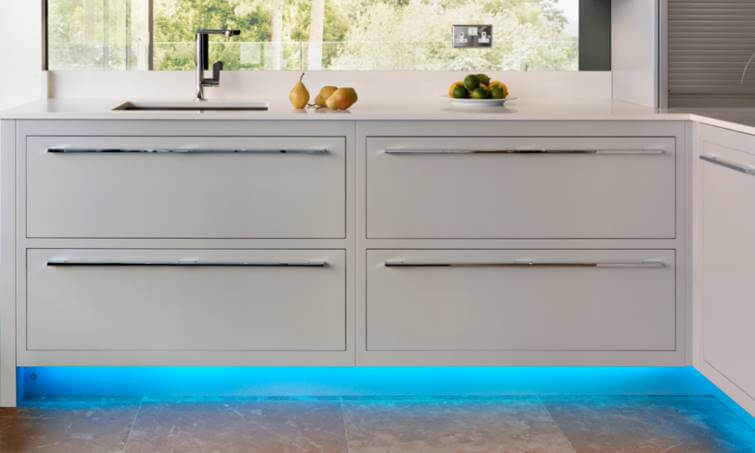
Plinth lights
Kitchen plinth lights are most commonly used to accent a specific element of the room, like the border of an island. These add ambiance and can even make furnishings look like they’re ‘floating’.
LED
All the types of lighting listed are available as LED options, which are incredibly popular in modern kitchen design. Using LED lighting can reduce your energy costs, lower heat generation, and have a longer lifespan than incandescent or fluorescent varieties. Perfect for a modern kitchen, LED lighting is crisp, bright, and available in a variety of styles and colours.
3. DON’T FORGET ABOUT NATURAL LIGHT
Assess how much natural light you have in your kitchen before adding any fixtures. If there isn’t much, there are plenty of ways to instantly brighten up your kitchen, such as introducing skylights or French doors and windows. Once you know how much natural light you’re working with, it’ll be easier to spot where you need artificial solutions. It is also important to monitor the natural light throughout the day as it may change considerably from morning to night, particularly if you have an east or west-facing kitchen.
4. MATCH KITCHEN LIGHTING TO DIFFERENT AREAS
Divide your kitchen into different areas to decide what lighting is needed. You may want spotlights directly above key points like the sink, hob or worktop, and under-cabinet lighting to illuminate your countertops (though ensure they’re flush and easy to clean, particularly when close to cooking areas). Then use lighting to differentiate relaxing areas from the work zones, such as a stunning pendant above the dining table.
Other ideas to consider are uplighters or striplights in the gaps between wall cabinets and the ceiling to give your room a subtle glow in the evening. While adding lighting in the kickplates or plinths will softly illuminate your floor.
Appliances with integral task lighting are useful here too. For example, choose an extractor that provides additional light above the hobs.
5. COMPLEMENT YOUR KITCHEN STYLE
Make sure your lighting is appropriate for your kitchen’s aesthetic. Minimalist designs will be enhanced by simple recessed fixtures and strip lighting that seamlessly blends in, whereas a chandelier or statement pendant will look better in opulent kitchens. Similarly, lighting options in reflective materials like chrome and stainless steel add a touch of glamour to a modern kitchen, or choose rustic finishes like copper and brass if your style is more traditional.
Size also matters, especially if your kitchen is small. Avoid eye-catching options that could take attention away from the space itself, and choose lighting that doesn’t cast too great of a shadow, as this will help you make the room look as big as possible. Consider the height of your ceiling too, as you don’t want anyone knocking their head on a low-hanging light.
6. EXPLORE DIFFERENT KITCHEN LIGHTING CONTROLS
On/off switches do the job, and are fine for activating task lighting, but why not have more flexibility when it comes to your mood lighting? Dimmer switches allow you to try out different levels of brightness to achieve the ambiance you’re looking for. If possible, make sure each light is controlled separately.
Or if you’re looking for something even more innovative, our designers can guide you through the wide range of statement controls available. Perhaps you’d like remote-controlled plinth lights, or bulbs that automatically switch on when a cupboard or drawer is opened.
Our showrooms display a variety of kitchen lighting options, so don’t hesitate to stop by for inspiration. Or to discuss your project with one of our top kitchen designers, call 0800 389 6938, or click here to request a complimentary design consultation.

